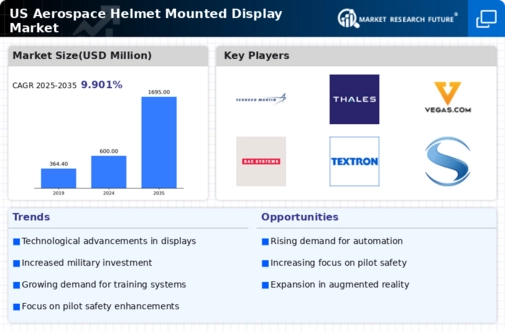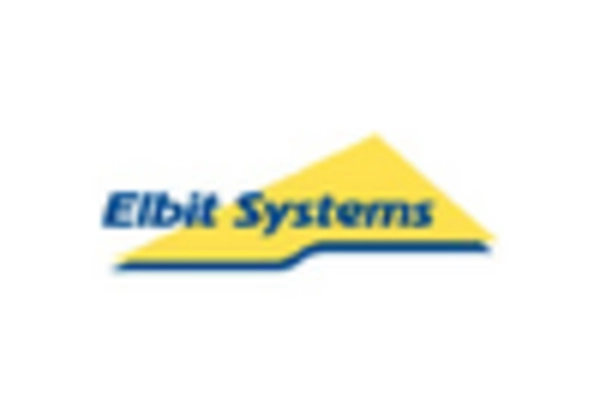Increased Military Spending
The aerospace helmet-mounted-display market is poised to benefit from the rising military expenditure in the United States. The Department of Defense has allocated substantial budgets for advanced technologies, including helmet-mounted displays, to enhance situational awareness and operational efficiency. In 2025, military spending is projected to reach approximately $800 billion, with a significant portion directed towards modernization programs. This trend indicates a robust demand for innovative helmet-mounted display systems that can integrate seamlessly with existing military platforms. As defense contractors seek to provide cutting-edge solutions, the aerospace helmet-mounted-display market is likely to experience accelerated growth, driven by the need for enhanced capabilities in combat and training scenarios.
Growing Demand for Pilot Safety
The aerospace helmet-mounted-display market is increasingly influenced by the heightened focus on pilot safety and operational effectiveness. With the aviation industry prioritizing safety measures, helmet-mounted displays are becoming essential tools for pilots, providing critical information in real-time. The National Transportation Safety Board (NTSB) has reported that situational awareness is a key factor in preventing aviation accidents. Consequently, the market for helmet-mounted displays is expected to expand as airlines and military organizations invest in technologies that enhance pilot safety. In 2025, the market is anticipated to grow by approximately 15%, reflecting the industry's commitment to improving safety standards and reducing accident rates.
Integration of Augmented Reality
The aerospace helmet-mounted-display market is witnessing a transformative shift with the integration of augmented reality (AR) technologies. AR enhances the functionality of helmet-mounted displays by overlaying critical data onto the pilot's field of view, thereby improving situational awareness and decision-making. As the demand for advanced training solutions increases, military and commercial aviation sectors are likely to adopt AR-enabled displays. This trend is supported by a projected growth rate of 20% in the AR market within the aerospace sector by 2026. The aerospace helmet-mounted-display market stands to gain significantly from this technological evolution, as AR capabilities become integral to modern aviation practices.
Advancements in Display Technologies
The aerospace helmet-mounted-display market is significantly influenced by advancements in display technologies, which are enhancing the performance and capabilities of these systems. Innovations such as OLED and microLED displays are providing higher resolution, improved brightness, and reduced power consumption. These advancements are crucial for military and commercial applications, where clarity and reliability are paramount. As display technology continues to evolve, the aerospace helmet-mounted-display market is expected to experience growth, with a projected increase of 12% in market size by 2026. This trend suggests that manufacturers will increasingly focus on integrating cutting-edge display technologies to meet the demands of modern aviation.
Rising Demand for Unmanned Aerial Vehicles
The aerospace helmet-mounted-display market is also being driven by the increasing utilization of unmanned aerial vehicles (UAVs) in various applications. As UAV technology advances, the need for effective control systems, including helmet-mounted displays, becomes paramount. These displays provide operators with essential data and enhance their ability to manage UAV operations effectively. The UAV market is projected to grow at a CAGR of 15% through 2026, indicating a substantial opportunity for the aerospace helmet-mounted-display market to expand alongside this trend. The integration of helmet-mounted displays in UAV operations is likely to enhance operational efficiency and situational awareness for operators.

















Leave a Comment